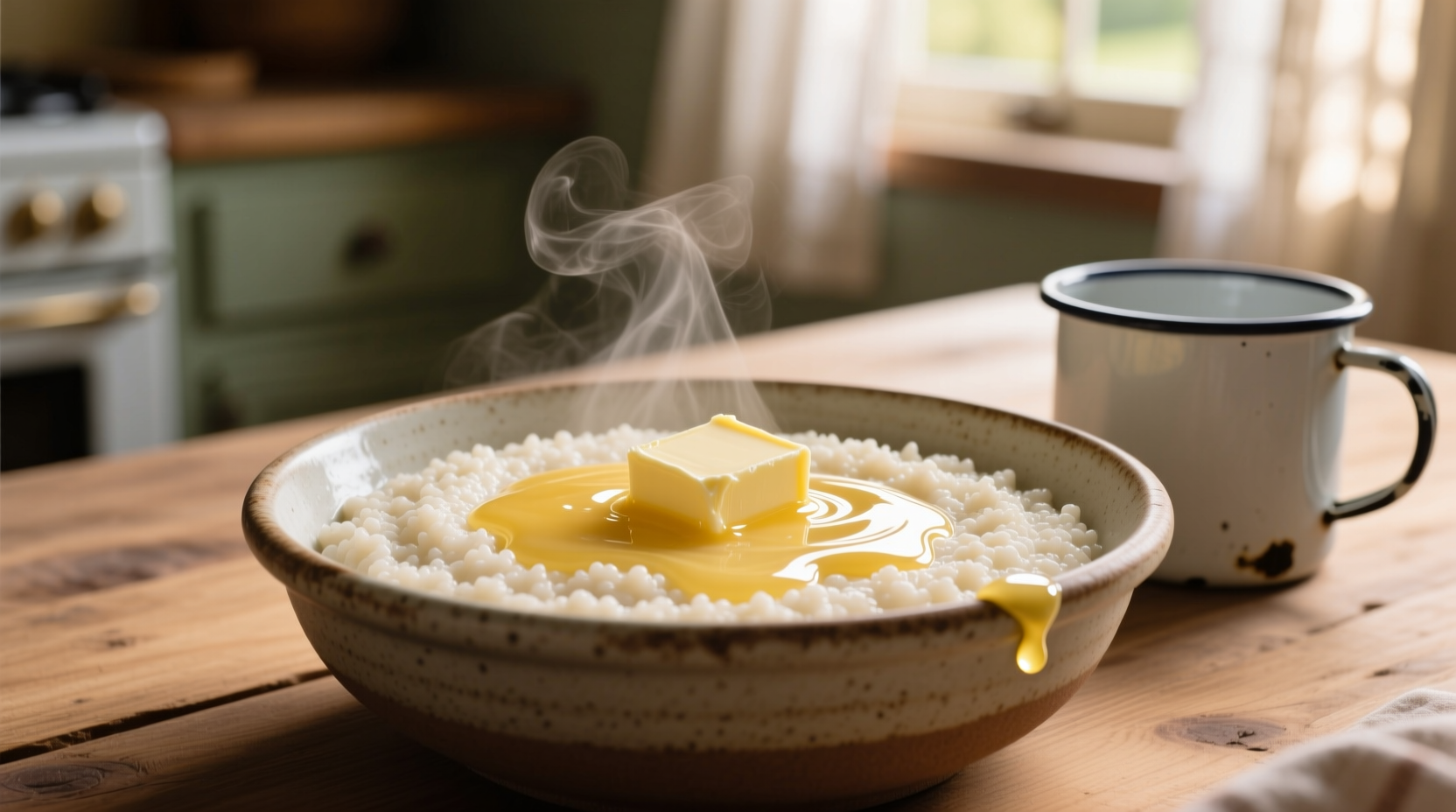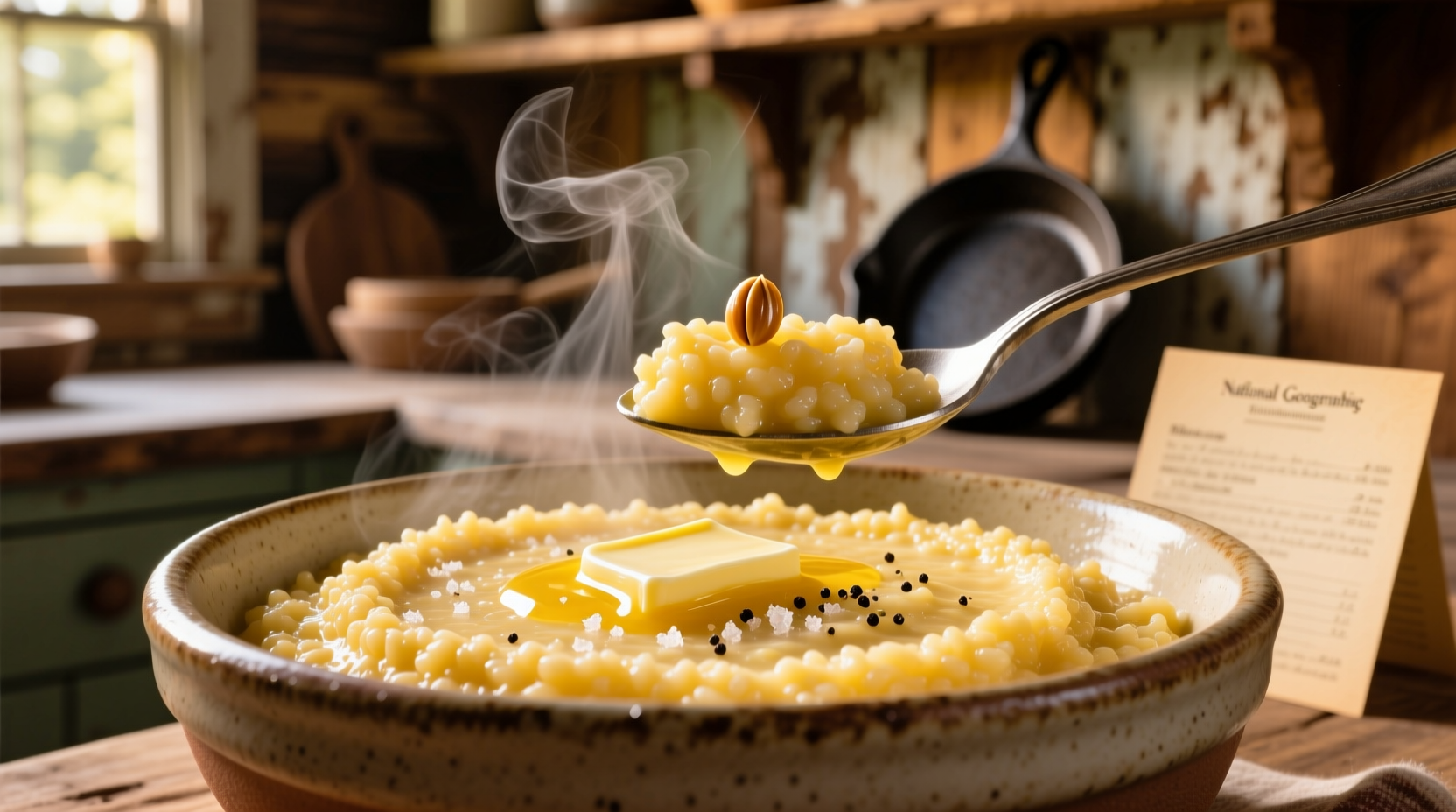Understanding the taste of grits starts with recognizing what they actually are: a porridge made from ground corn, specifically dent corn. Unlike sweet corn you might eat off the cob, the corn used for grits has a starchier composition that creates that distinctive creamy texture when cooked slowly with liquid.
The Core Flavor Profile of Grits
When prepared simply with just water or milk, grits deliver a clean, mild corn flavor that's neither overpowering nor bland. Think of it as corn's subtle whisper rather than its bold shout. The natural sweetness is delicate—more like the gentle sweetness of cornbread than the sugary punch of corn syrup.
Texture plays a crucial role in how we perceive grits' taste. Properly cooked grits should be smooth and creamy, not gritty (despite the name) or lumpy. This velvety mouthfeel carries the subtle corn flavor across your palate, creating a comforting eating experience that serves as the perfect canvas for additional flavors.

How Preparation Transforms Grits' Taste
The magic of grits lies in their culinary versatility. What begins as a neutral corn base transforms dramatically based on preparation methods:
- Basic preparation with water yields the purest corn flavor – earthy, slightly sweet, with minimal richness
- Milk substitution adds natural sweetness and creaminess that enhances the corn notes
- Butter incorporation creates a rich, savory depth that balances the natural sweetness
- Salt addition is essential – it doesn't make grits taste salty but rather unlocks the corn's natural flavors
Professional chefs like those at the Southern Foodways Alliance emphasize that the cooking technique matters as much as ingredients. Slow cooking with gradual liquid addition prevents clumping and develops a more complex flavor profile through gentle starch gelatinization.
Grits Compared: Understanding Flavor Differences
How do grits stack up against similar corn-based foods? This comparison helps contextualize their unique taste profile:
| Food | Texture | Flavor Profile | Best Preparation |
|---|---|---|---|
| Grits | Smooth, creamy | Mild corn, slightly sweet | Slow-cooked with milk/butter |
| Polenta | Grainier, more substantial | Stronger corn flavor, earthier | Cooked with broth, served firm |
| Oatmeal | Chewy, fibrous | Nutty, more pronounced grain taste | Cooked with water/milk, sweetened |
| Cornmeal Mush | Firmer, more solid | Bolder corn flavor | Cooled and sliced, then fried |
The Evolution of Grits in American Cuisine
Grits have undergone significant transformation since their origins in Native American cuisine. This timeline shows how preparation methods have influenced their taste profile over time:
- Pre-colonial era: Native Americans created "rockahominy" by treating corn with wood ash or lye, developing a distinctive flavor that early settlers adopted
- 18th-19th century: Grits became a Southern staple, typically stone-ground and cooked slowly over fire, yielding a more complex corn flavor
- Early 20th century: Industrialization introduced quick-cooking and instant grits, sacrificing some flavor depth for convenience
- Late 20th century: The artisanal food movement revived interest in stone-ground grits, restoring richer flavor profiles
- Present day: Chefs experiment with heirloom corn varieties, creating grits with nuanced flavor differences based on corn type and terroir
When Grits Shine: Contextual Flavor Applications
Understanding where grits excel helps maximize their flavor potential. They work best in these culinary contexts:
- As a savory breakfast with cheese, bacon, or shrimp (classic shrimp and grits)
- As a comforting side dish that pairs well with roasted meats or stews
- As a base for rich sauces that cling to their creamy texture
- As a sweet breakfast option with sugar, fruit, or syrup for those who prefer that preparation
Grits struggle when rushed – quick preparation creates a pasty texture that masks their subtle flavor. They also don't work well as a standalone dish without proper seasoning, as their mild nature needs complementary flavors to shine.
Enhancing Grits Flavor: Practical Techniques
Whether you're new to grits or looking to elevate your preparation, these techniques transform their taste:
- Start with quality grits – stone-ground varieties from heritage corn offer more complex flavor than instant
- Toast the grits slightly in butter before adding liquid to develop nuttier notes
- Add liquid gradually while stirring to prevent clumping and ensure even cooking
- Incorporate cheese at the end – sharp cheddar or parmesan adds savory depth without overwhelming the corn flavor
- Finish with fresh herbs like chives or scallions for brightness that complements rather than competes
According to culinary research from America's Test Kitchen, the ratio of liquid to grits dramatically affects flavor perception. Their tests showed that using 4 parts liquid to 1 part grits creates the ideal balance where corn flavor remains present but not starchy.
First-Time Grits Eaters: Managing Expectations
If you've never tried grits before, understanding common reactions can help set appropriate expectations:
Most first-timers describe the experience as surprisingly comforting rather than exciting. The mild flavor often surprises people expecting something more robust. Those accustomed to oatmeal frequently note grits' smoother texture and more subtle corn flavor. International visitors often compare them to polenta but appreciate grits' finer consistency.
The USDA's FoodData Central confirms that corn's natural sugar content (approximately 1.8g per 100g in cooked grits) creates that gentle sweetness without added sugar, explaining why properly prepared grits satisfy without being overtly sweet.
Frequently Asked Questions
Here are answers to common questions about grits' taste profile:











 浙公网安备
33010002000092号
浙公网安备
33010002000092号 浙B2-20120091-4
浙B2-20120091-4